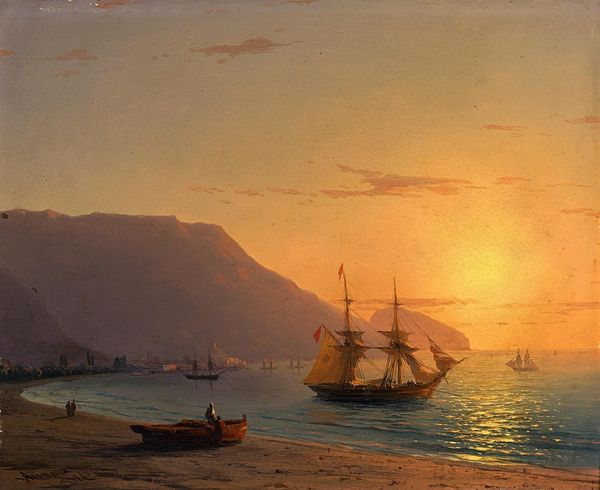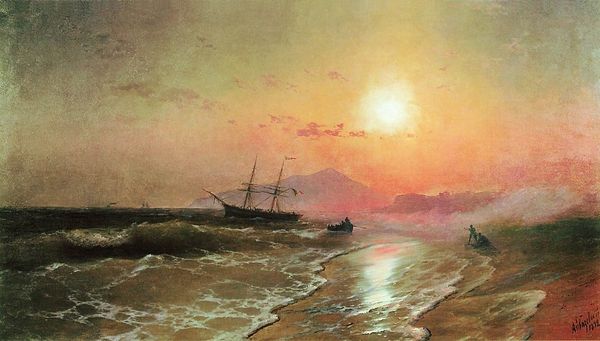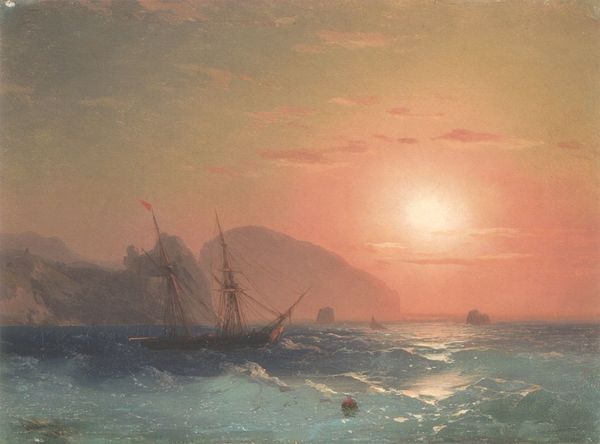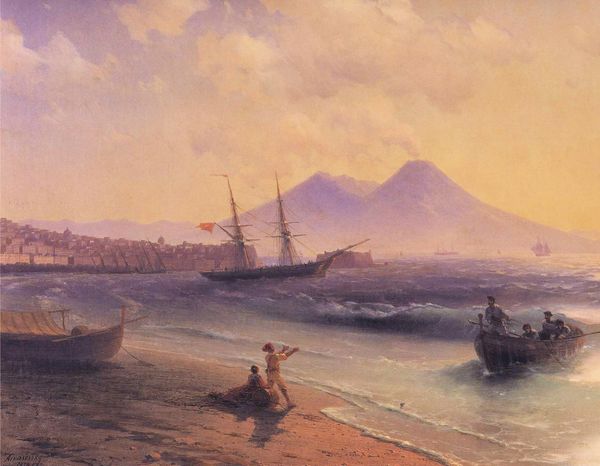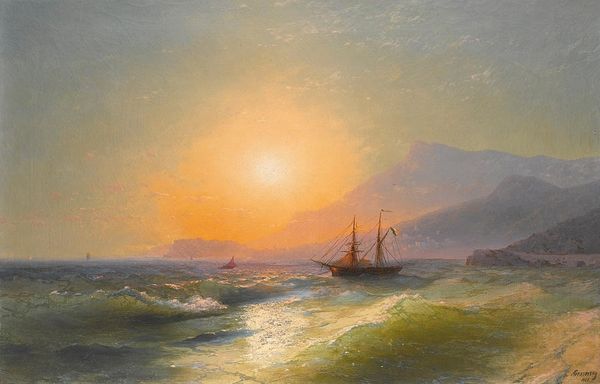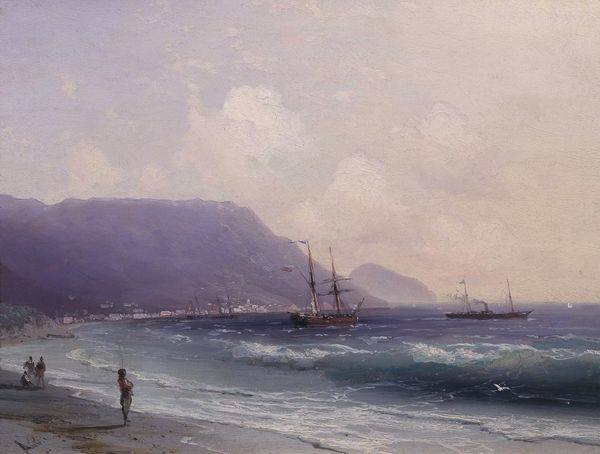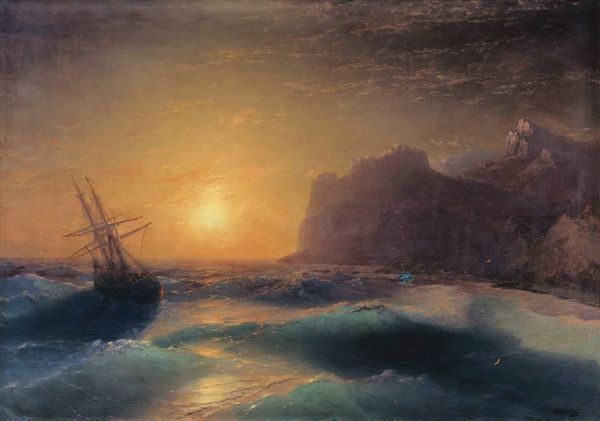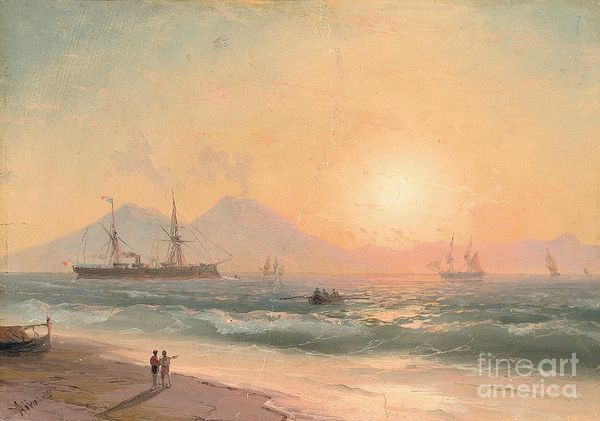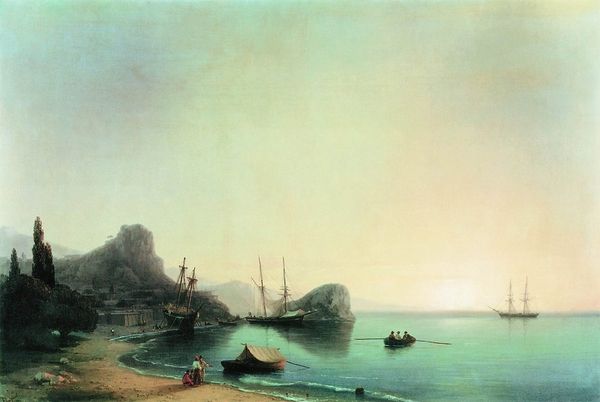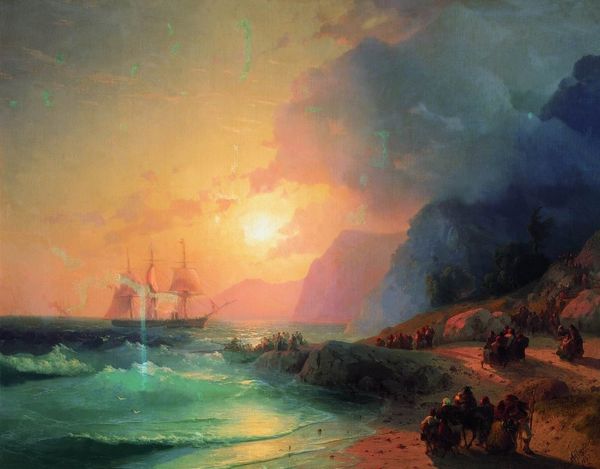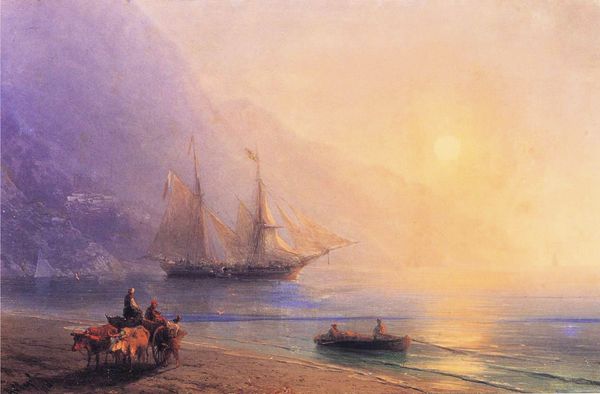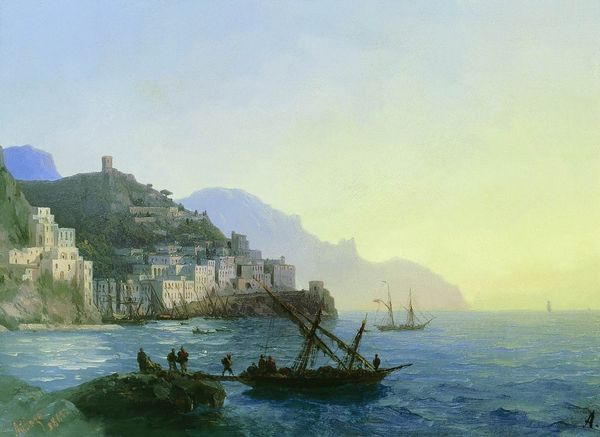
plein-air, oil-paint
#
impressionism
#
boat
#
sky
#
ship
#
impressionist painting style
#
plein-air
#
oil-paint
#
vehicle
#
landscape
#
impressionist landscape
#
oil painting
#
ocean
#
romanticism
#
mountain
#
sea
Dimensions: 34 x 43 cm
Copyright: Public domain
Editor: So, this is "Seascape," an oil painting; we don’t have a date, but it’s by Ivan Konstantinovich Aivazovsky. I’m really struck by the light; it feels almost dreamlike. What stands out to you when you look at it? Curator: The luminescence, as you noticed, is key. Aivazovsky masterfully depicts the sea, not just as a body of water, but as a canvas reflecting human ambition and nature's power. Note how the ships aren't merely vessels; they're symbols of exploration, vulnerability, and perhaps even national pride against the vast, indifferent ocean. What emotional response do these ships evoke for you within the seascape's composition? Editor: That’s interesting, because the ships give me a feeling of smallness compared to the overall scene. I hadn’t thought about the idea of national pride. Curator: Indeed, the smallness contributes to the sublime—that feeling of awe mixed with terror. Consider also the turbulent waves versus the tranquil, almost heavenly light in the sky. It's a play on duality – chaos and order, the known and the unknown, the earthly and divine. Do you see how this juxtaposition affects your understanding of the seascape as more than just a pretty picture? Editor: Definitely! The tension between those contrasting elements creates a much deeper meaning. The light, then, could represent hope or divine intervention, even? Curator: Precisely. It’s through symbols that we connect the visual to the visceral, the artwork to our own humanity and place in the wider world. Considering how paintings can resonate across cultures is quite powerful. Editor: Absolutely. I’ll never look at a seascape quite the same way again! Curator: Nor will I; these shared experiences grant enduring relevance to the symbology.
Comments
No comments
Be the first to comment and join the conversation on the ultimate creative platform.
